This article describes key requirements for ensuring a successful configuration of the SQL Report Server Integration with Barracuda RMM.
Below are the verification steps to ensure a successful configuration of SQL Server Reporting Services integration with Barracuda RMM when running separate servers for the Service Center application and database.
In order for the Service Centers Report server integration to work, the 4 following items must be accessible on the SQL Report Server from the Service Center application server:
- The account used for the configuration must have administrative access to the Report Server machine and Report Manager website
- The Report Manager URL must be accessible
- File Sharing must be accessible
- WMI Must be accessible
Configuration Account
The account used during the Report Server configuration must have administrative access to the Report Server machine and Report Manager web site. An SQL account cannot be used for this part of the configuration and this account must be a computer user or domain user account. The account used for this is not stored in the service center database, but instead is used to create a limited user account (MWSCReportUser) used only for the Report Server integration.
Report Manager URL
Before running the Reporting Configuration the Report Manager URL must be accessible. The Service Center will rely on this URL for publishing delivery schedules and other reporting tasks. This URL will vary depending on whether a customer instance name or not is used during the Reporting Services installation. This URL is located by logging into the Report Server and performing the following steps:
- Log into the server hosting SQL Server Reporting Services.
- Launch the Reporting Services Configuration Manager.
- On the Reporting Services Configuration Connection screen, choose the correct Report Server Instance.
- Click Connect.
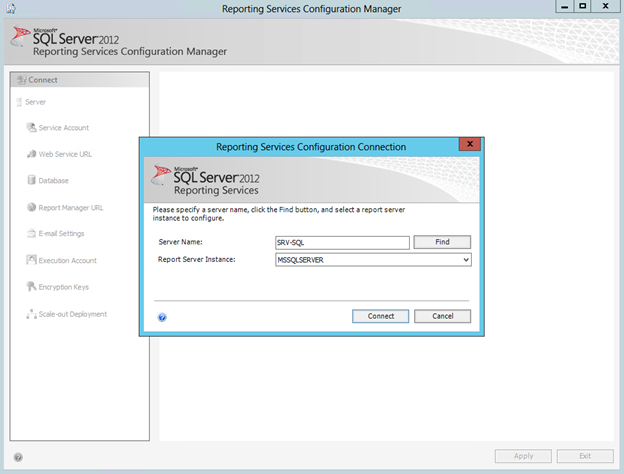
- Click the Report Manager URL tab on the left.
.png)
- Make note of the URL displayed.
- Log in to the Service Center application server.
- Launch Internet Explorer.
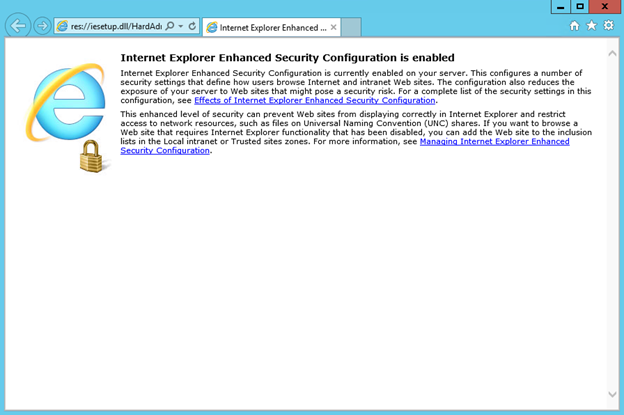
- Navigate to the URL noted in Step 6 (Example: http://mysqlserver/Reports).
- When prompted for credentials, enter the credentials for an account that has administrative access to the Report Manager URL. See Grant User Access to a Report Server (Report Manager) from Microsoft.
- You should see the following:
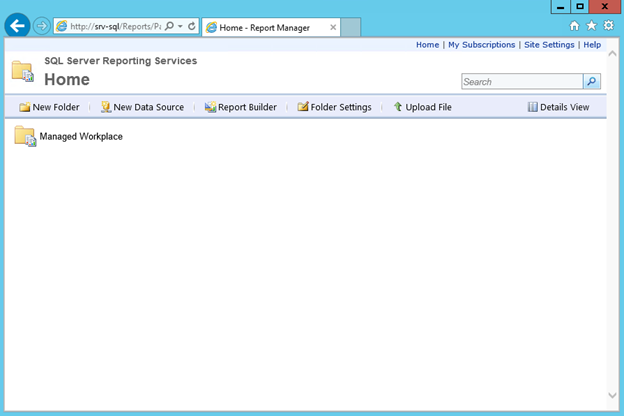
If the Report Manager URL is not accessible, you may need to check some of the following items:
- The account has the correct permissions.
- The SQL Server Reporting Services service is running.
- There is no firewall blocking access to the Report Manager URL (Default port 80).
File Sharing
Before you can run the Reporting Configuration, you must be able to access file shares (hidden or published) on the Report Server from the Service Center application server. File sharing is used to transfer report files to the report server when installing new reports. During the reporting configuration, an additional share will be created called MWResources.
WMI Access
Before you can run the Reporting Configuration you must be able to query WMI on the Report Server from the Service Center application server. The Reporting Configuration relies on WMI access to help detect the installed SQL Server Reporting Services version as well as the correct instance name. To verify WMI is accessible, perform the following steps:
- Log into the Service Center application server.
- Go to Start > Search.
- Type
wbemtest.exeand press enter to launch WBemTest. - On the next screen, click Connect.
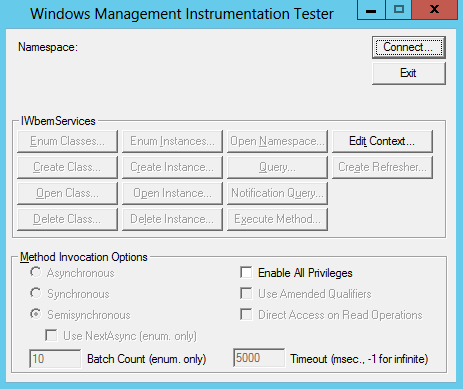
- In the Namespace field, enter the appropriate namespace. This will vary based on the SQL Version and Instance name. See Access the Reporting Services WMI Provider for additional details.
- For SQL 2008 or 2008 R2:
\\ServerName>\root\Microsoft\SqlServer\ReportServer\RS_<SQLInstanceName>\v10 - For SQL 2012:
\\ServerName>\root\Microsoft\SqlServer\ReportServer\RS_<SQLInstanceName>\v11 - For SQL 2014:
\\ServerName>\root\Microsoft\SqlServer\ReportServer\RS_<SQLInstanceName>\v12.png)
- For SQL 2008 or 2008 R2:
- Click Connect
- Once you have connected to the WMI instance, click Query…
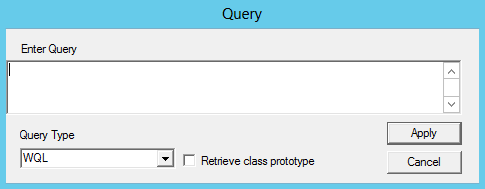
- Enter the following query and click apply:
select * from msreportserver_instanceYou should see something similar to the following:
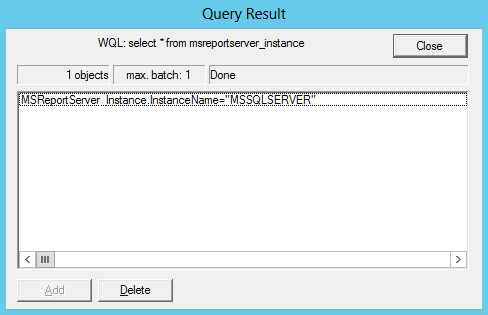
If you are unable to connect to WMI, you may need to refer to the article on Troubleshooting WMI Issues.
